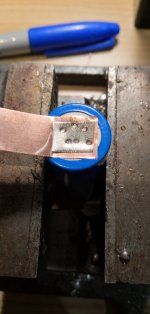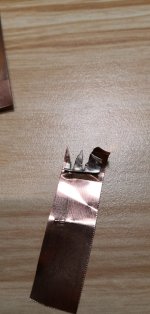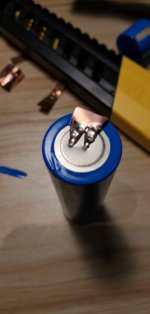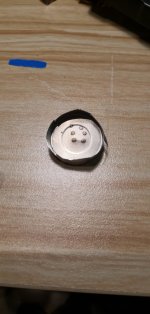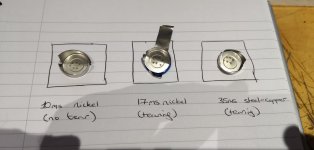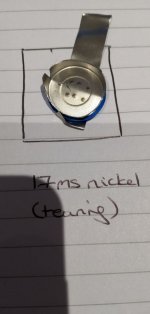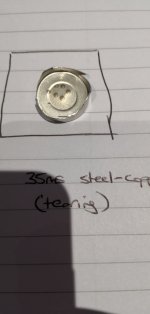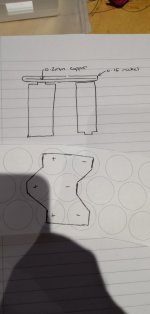ridethelightning
1 MW
- Joined
- Jul 21, 2013
- Messages
- 2,010
Tommy L said:I’m doing the sandwich....
0.1mm pure copper sheet/foil
0.2mm pure nickel x 8mm
I figured this cross section should give zero
“C rise” to 75-90 amps
100-140 amps with some loss to heat
160 amps max
I have a 30amp BMS. 35 miles on the pack so far.
Not even warm to the touch when asking 30amps.
60 Jules and using 3 LiFePO4 12.8v nominal 9.6ah packs to power the Kwelder 1500-1600amps draw from Kwelder.
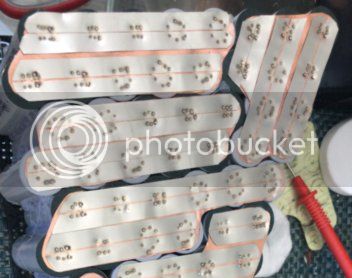
that looks pretty good, however i think there is no need to do the slit method between 2 nickel strips. the nickel should have enough resistance to weld the copper without doing the double strips. the copper will be taking all the series current so nickel wont be helping there i think, but it couldn't hurt either.


